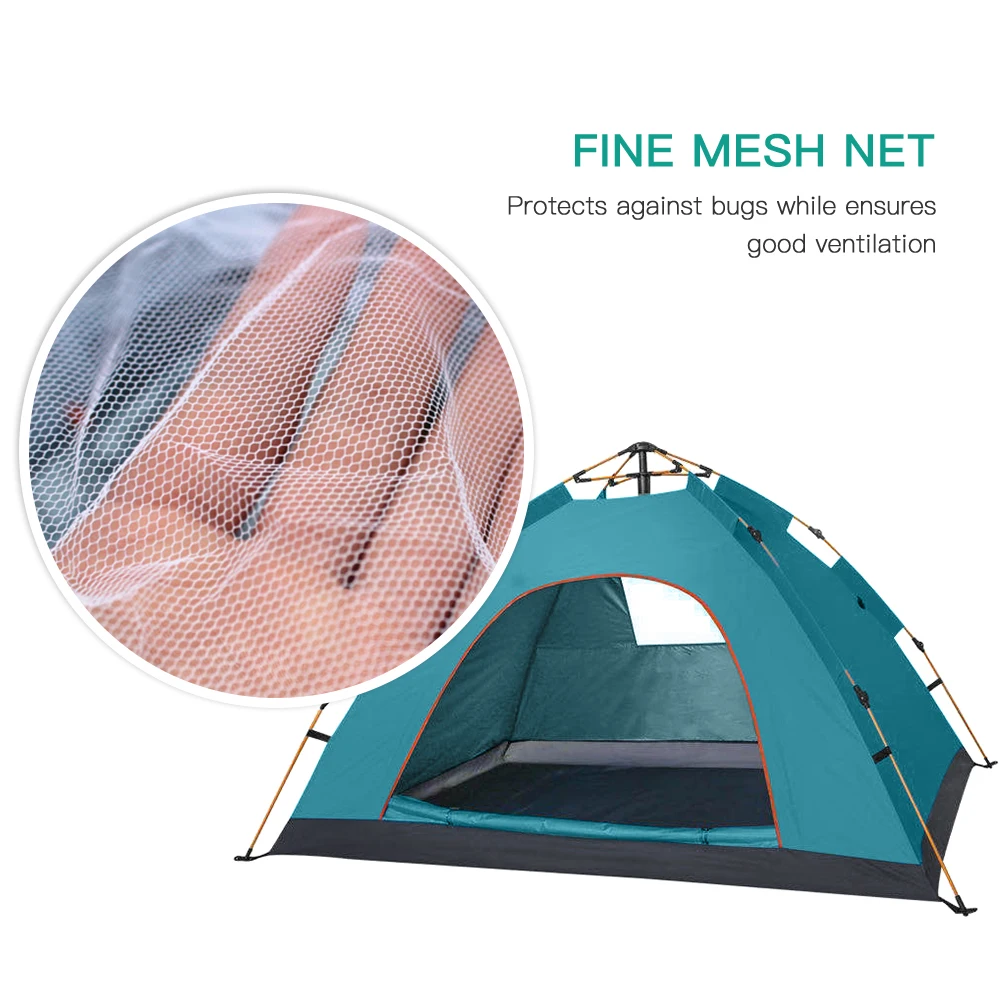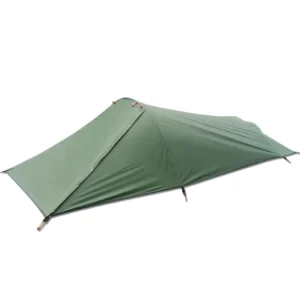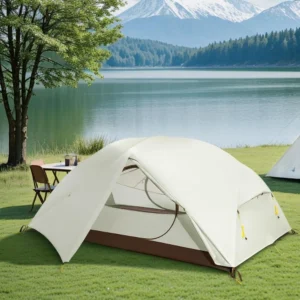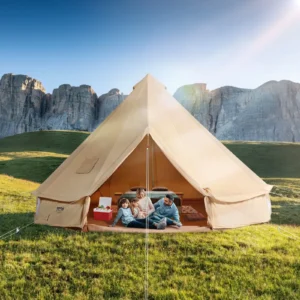When venturing into the wilderness, your tent becomes your lifeline – a crucial barrier between you and the elements. True durability in tents comes from a combination of premium materials, thoughtful engineering, and meticulous construction that can withstand nature’s most challenging conditions. For adventurers facing howling winds on exposed ridgelines, heavy snowfall on high-altitude expeditions, or weeks-long treks through varying weather, tent durability isn’t just a preference—it’s essential for safety and survival.
In this comprehensive guide, we’ll examine what truly makes a tent durable, from fabric specifications to construction techniques. We’ll explore renowned manufacturers creating shelters that consistently perform in extreme environments, highlighting specific models that have proven their worth in the harshest conditions. Whether you’re planning an arctic expedition or simply want a tent that will serve you reliably for many years, understanding the fundamentals of durable tents for all seasons will help you make an informed investment in your outdoor shelter.
What Makes a Tent Truly Durable? Understanding Key Factors
Creating a genuinely durable tent requires excellence in multiple aspects of design and construction. The difference between a tent that fails after a few trips and one that lasts for decades lies in these critical factors:
Fabric Quality and Denier
Tent fabrics are typically measured in “denier” (D) – a unit indicating thread thickness. Higher denier numbers generally mean stronger, more durable fabrics. Premium expedition tents often use 50-70D fabrics for walls and 70-150D for floors, compared to lightweight options that might use 15-30D materials. While ripstop nylon remains the gold standard for its excellent strength-to-weight ratio, heavy-duty most durable tent material options include polyester (more UV-resistant than nylon) and traditional canvas for extreme durability.
Waterproofing Technologies
A tent’s waterproofing is measured by “hydrostatic head” ratings – the height of water column (in millimeters) the fabric can withstand before leaking. Quality backpacking tents typically offer 1,500-2,000mm ratings, while expedition-grade options provide 3,000-5,000mm protection. Silicone-treated fabrics (often labeled “silnylon” or “silpoly”) offer superior waterproofing and durability compared to standard polyurethane (PU) coatings.
Pole Materials and Construction
Tent poles provide the structural integrity needed to withstand wind and snow loads. Premium aluminum alloys from manufacturers like DAC offer the optimal balance of strength, weight, and durability. Pole diameter matters significantly – expedition tents might use 9-10mm diameter poles compared to standard 8-8.5mm poles in recreational models. Carbon fiber poles offer impressive strength-to-weight ratios but at premium prices, while fiberglass is economical but less durable in extreme conditions.
Seam Construction and Reinforcement
The what makes a tent windproof question largely comes down to seam construction. Double-stitched, taped seams prevent water penetration at these vulnerable points. Reinforcement at high-stress areas (pole attachment points, guy-out points, and corners) is crucial for long-term durability. Look for bartacked seams and additional fabric reinforcement patches at these critical junctions.
UV Resistance and Environmental Exposure
Continuous UV exposure can degrade tent fabrics over time, particularly nylon. Quality manufacturers address this through UV-resistant coatings and fabric treatments. Polyester naturally offers better UV resistance than nylon, making it valuable for extended trips or high-altitude expeditions where UV intensity increases dramatically.
Top 5 Brands Known for Manufacturing Ultra-Durable Tents
When investing in a tent that must perform reliably in challenging conditions, certain manufacturers have established unparalleled reputations for durability through decades of rigorous field testing and continuous innovation:
Hilleberg
This Swedish company has become synonymous with extreme-condition tent durability. Their meticulous approach includes using proprietary Kerlon fabrics with tear strengths several times higher than industry standards. Hilleberg separates their tents into labeled series (Black, Red, Yellow) based on their intended environmental conditions, with Black Label representing their most bombproof designs for extreme conditions. Their signature tunnel and dome designs excel in severe weather, particularly in high-wind scenarios.
MSR (Mountain Safety Research)
With a heritage rooted in climbing and mountaineering, MSR brings engineering precision to their tent designs. Their expedition models feature reinforced pole structures and proprietary Xtreme Shield waterproofing that lasts significantly longer than standard coatings. MSR’s unique pole geometry in models like their Access and Remote series creates exceptional stability in harsh conditions while maintaining reasonable weight.
The North Face
Drawing on decades of expedition heritage, The North Face’s Summit Series tents remain trusted companions on the world’s most challenging mountains. Their expedition models feature burly fabrics and fortress-like structural designs that prioritize weather protection above all else. Their pole sleeve construction system distributes stress evenly across the tent body, enhancing both stability and longevity.
Black Diamond Equipment
Applying their climbing expertise, Black Diamond excels in creating single-wall shelters that withstand extreme alpine conditions. Their distinctive approach to pole structure creates remarkable strength-to-weight ratios. Their tents featuring ToddTex and other proprietary fabrics deliver exceptional breathability alongside crucial weather protection, making them favorites for serious mountaineering.
Nemo Equipment
Though newer than some traditional manufacturers, Nemo has quickly established a reputation for innovative durability. Their pole hub designs create extraordinarily stable structures, while their precision in material selection results in tents that maintain strength with less weight penalty. Their attention to reinforcement at key stress points makes their expedition models particularly resilient.
For outdoor enthusiasts looking for the ultimate in protection, browsing heavy duty 4-season tents reveals models from these manufacturers designed specifically for extreme environments. Many outdoor professionals consider these brands essential when selecting four-season tents built for durability in challenging expeditions.
Most Durable Tent Models: A Comprehensive Comparison
When comparing the most robust tent models across different brands, several stand out for their exceptional durability characteristics:
| Model | Brand | Material Strength | Weather Resistance | Key Durability Features | Best Use Case |
|---|---|---|---|---|---|
| Keron 4 GT | Hilleberg | 5000mm floor, Kerlon 1800 | Extreme | 10mm poles, tunnel design with 4 crossing poles | Polar expeditions, sustained high winds |
| Trango 4 | Mountain Hardwear | 70D nylon, 10000mm floor | Excellent | Welded corners, 5 pole design | High-altitude mountaineering |
| VE 25 | The North Face | 70D nylon, 10000mm floor | Excellent | Pole sleeve construction, reinforced vestibule | Extended winter expeditions |
| Remote 2 | MSR | 68D ripstop polyester, 10000mm floor | Superior | Xtreme Shield coating, 9.5mm poles | Remote winter camping |
| Chogori | Black Diamond | 30D ToddTex single-wall | Very Good | Integrated vestibule, reinforced guy points | Alpine climbing expeditions |
| Tenshi | NEMO | 30D nylon, 3000mm | Very Good | Innovative pole structure, reinforced anchor points | Technical alpine ascents |
These models represent the pinnacle of tent engineering, with materials and construction specifically designed to withstand the most challenging conditions. While all feature exceptional durability, they differ in their specific applications and the conditions they’re optimized to handle.
The standout feature across all these models is their comprehensive approach to durability – they don’t just excel in one area (like floor thickness) but address every potential vulnerability through thoughtful design. From 4-season winter 2 person tents designed for mobility to larger expedition models, these manufacturers apply the same dedication to durability across their specialized lines.
Understanding the differences in weather resistance and durability in camping tents helps identify which models are best suited for specific environmental challenges. For instance, the Hilleberg Keron’s tunnel design excels in snow loading scenarios, while the geodesic structure of the Mountain Hardwear Trango provides superior all-around stability in high winds.
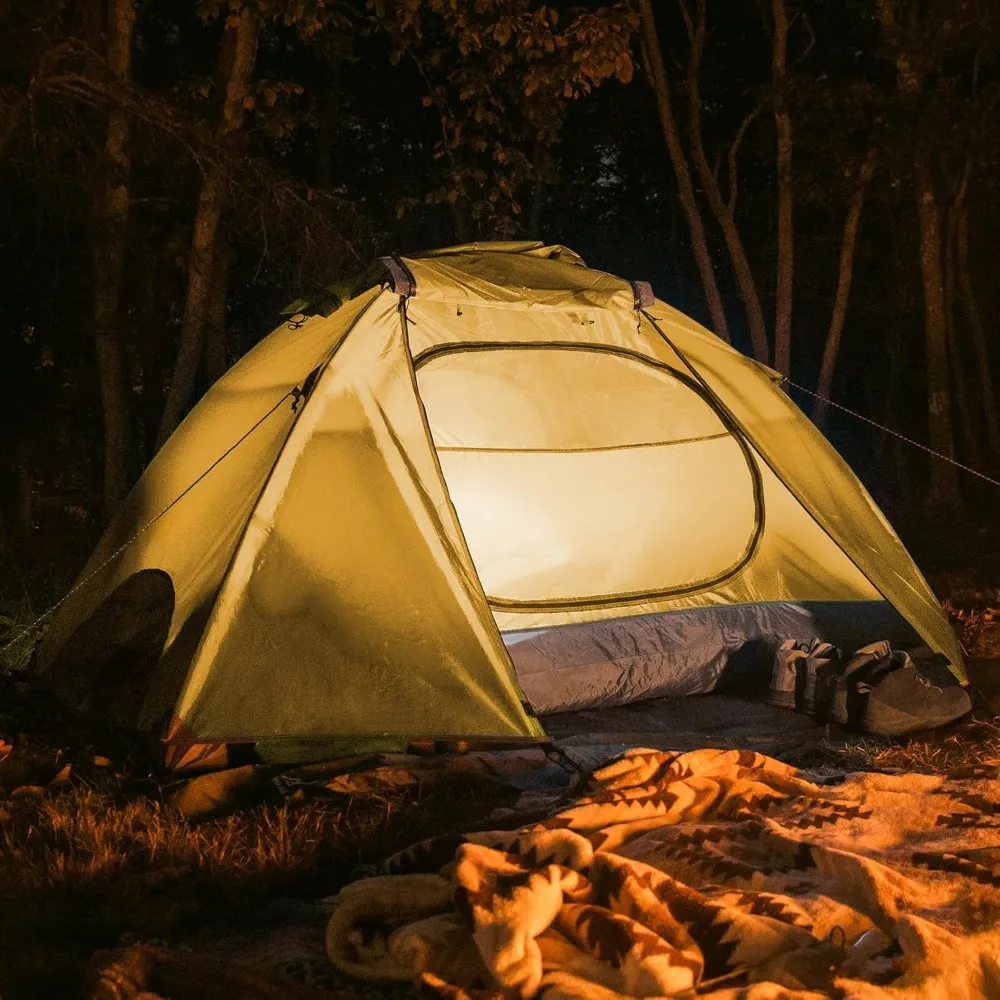
Expedition-Grade Tents: Built for the Harshest Environments
Expedition-grade tents represent the pinnacle of outdoor shelter engineering, designed specifically to withstand the most extreme environments on earth. These shelters differ fundamentally from standard camping tents through specialized features developed through decades of real-world testing in the harshest conditions.
The defining characteristics of expedition tents include massively reinforced pole structures, often featuring extra poles or crossing pole designs that create exceptional stability. Models like those found in our mountaineering tent collection incorporate specialized features like snow skirts that prevent drift infiltration and create additional anchoring in snow conditions. Oversized, reinforced vestibules provide critical protected space for gear storage and cooking in sustained storms.
Guy-line systems on expedition tents are significantly more robust than standard models, featuring multiple attachment points with reinforced anchoring patches. These systems allow for precise tensioning to optimize the tent’s aerodynamic profile in high winds. Understanding wind and snow load capacity in durable tents becomes crucial when selecting expedition shelters, as these metrics directly impact survival in extreme conditions.
Advanced ventilation systems that continue functioning during storms represent another critical feature, as condensation management becomes a serious concern during multi-day storms. The best expedition models maintain airflow without compromising weather protection, preventing the dangerous accumulation of interior ice that can damage equipment and create unsafe conditions.
For those planning serious mountain expeditions or arctic adventures, comprehensive 4-season tents ultimate guide resources provide detailed insights into selecting appropriate expedition-grade shelters. These tents represent significant investments but deliver unmatched reliability when failure is simply not an option.
Long-Term Backcountry Shelters: Balancing Durability and Weight
For extended backcountry trips, the durability equation changes slightly – weight becomes a crucial consideration alongside longevity. Thru-hikers and long-distance backpackers need tents that can withstand months of continuous use while remaining portable enough for daily travel.
The most successful ultralight backpacking tents for extended journeys achieve durability through strategic material allocation rather than brute strength. These designs use higher-denier fabrics in high-wear areas (floors, door panels) while employing lighter materials elsewhere to minimize weight. Advanced silicone impregnation treatments significantly enhance tear strength and UV resistance without weight penalties.
Long-term exposure to ultraviolet radiation presents a unique durability challenge for extended trips. Premium tents address this through UV-stabilized fabrics and treatments that maintain structural integrity despite weeks or months of sun exposure. Polyester fabrics often outperform nylon in this specific aspect of durability, making them preferred for certain extended applications despite slight weight disadvantages.
Tent pole connections receive special attention in long-term backcountry models, as these junction points experience the most stress during repeated setup and takedown cycles. Reinforced pole hubs, precision machined connectors, and specialized pole sleeves distribute tension more evenly, preventing the fatigue failures common in standard tents.
When building your backpacking big 3 essential gear collection for extended journeys, prioritizing these durability features in your shelter choice can mean the difference between a successful journey and a premature equipment failure in remote locations.
Canvas and Heavy-Duty Options: Maximum Lifespan Tents
For scenarios where absolute durability takes precedence over portability, modern canvas and hybrid poly-cotton tents provide unmatched longevity. These heavy-duty options offer distinct advantages that make them ideal for certain applications where weight is less critical than shelter lifespan.
Traditional canvas camping tents can last decades with proper care, far outlasting synthetic alternatives. Modern canvas treatments enhance their natural water resistance while preserving breathability. This natural moisture management prevents the condensation issues common in fully synthetic tents during variable conditions, a key factor in maintaining comfort during extended use.
The durability benefits of canvas extend beyond just lifespan – these materials withstand abrasion exceptionally well, making them ideal for fixed camps or situations with limited site options. Their substantial insulation properties also reduce temperature fluctuations, creating more stable living environments in variable weather.
Several manufacturers have developed hybrid materials that blend canvas durability with modern weather protection. These canvas shelter durability in rough weather innovations provide enhanced performance while maintaining the core benefits of traditional materials. The weight penalty remains significant – canvas options typically weigh 2-4 times more than comparable synthetic shelters – but the durability benefits make this worthwhile for appropriate applications.
Base camping expeditions, hunting camps, and extended family camping scenarios benefit most from these heavy-duty options. Their ability to withstand repeated setup and extended deployment makes them especially valuable for situations requiring a reliable home base over extended periods.
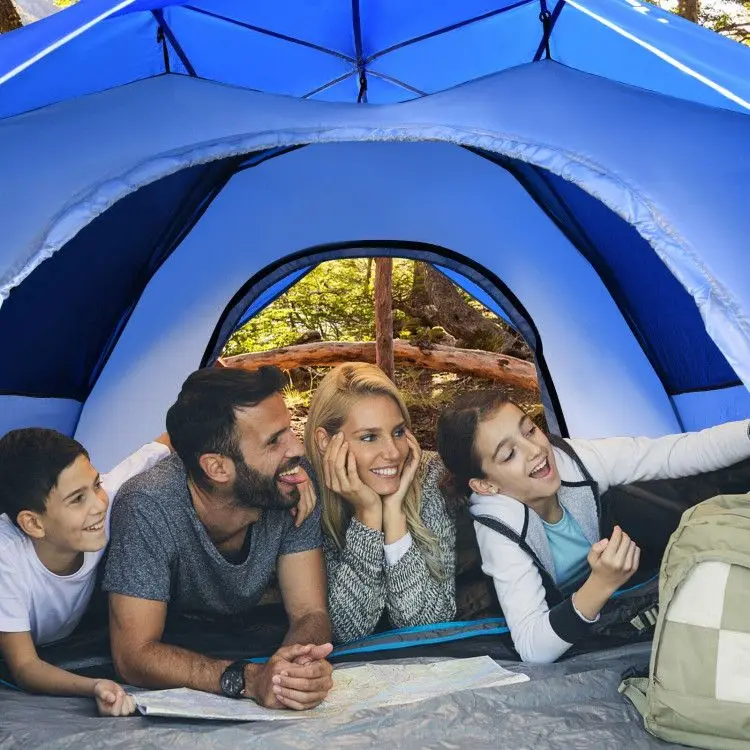
Critical Durability Features to Look For When Buying
When evaluating tent durability for purchase, focusing on these specific features will help identify models designed for maximum longevity:
Reinforced Stress Points – Examine areas where poles connect to the tent body, particularly at corners and ridge points. Quality tents feature additional fabric layers, bartacking (dense zigzag stitching), and webbing reinforcements at these high-stress locations. These seemingly small details prevent the catastrophic failures that often begin at connection points.
Zipper Quality and Protection – Premium YKK zippers (particularly #8 or #10 sizes for main doors) with storm flaps provide crucial long-term reliability. Well-designed tents include zipper covers and garages that prevent water intrusion and reduce strain during operation. Examine how smoothly zippers operate around corners, as this indicates proper alignment that prevents long-term wear.
Floor Construction – Beyond just thickness (typically measured in denier), examine the bathtub design height and seam placement. Higher bathtub floors (4-6 inches) prevent splashback water entry, while seams raised off the ground avoid the primary failure points in many tents. Fully-taped, factory-sealed floor seams provide significantly better long-term waterproofing than user-applied seam sealants.
Guy-Out Points Quantity and Construction – More attachment points allow better load distribution during high winds. Premium tents feature reinforced webbing loops with bar-tacked attachment to the main tent body rather than just stitched fabric loops. Look for reflective guy lines and tension adjusters that maintain proper tension throughout changing weather conditions.
Pole Sleeve vs. Clip Design – While clip attachments offer easier setup, sleeve designs generally provide superior strength in extreme conditions by distributing force along the entire pole length. The best expedition tents often use hybrid systems: sleeves at critical structural points and clips for secondary attachments and ventilation management.
Understanding all-season tent materials guide principles helps evaluate these features in context. Examining four-season tent features and benefits provides additional insight into how these durability elements work together as a complete system in premium shelters.
How Weather Conditions Affect Your Tent Durability Requirements
Different environmental challenges demand specific durability characteristics in your tent selection:
Wind Resistance
High-wind environments require tents with low-profile designs and multiple crossing poles. Dome and geodesic structures typically outperform cabin-style designs in windy conditions. The number and strategic placement of guy-out points significantly impacts wind performance – look for designs with at least 6-8 attachment points positioned to stabilize the tent from multiple directions. Understanding navigating nature’s fury with durable tents helps evaluate these critical structural considerations.
Heavy Precipitation
For regions with extreme rainfall, hydrostatic head ratings become paramount. Floor ratings should exceed 5000mm for serious weather protection, while flysheet ratings of 2000-3000mm provide reliable performance. Full-coverage rainflies that extend to the ground offer significantly better long-term weather protection than partial-coverage designs. Advanced tent designs incorporate features like understanding wind resistance in alpine tents to manage both wind and water simultaneously.
UV Exposure
High-altitude and desert environments expose tents to intense ultraviolet radiation that degrades fabrics over time. Polyester generally offers superior UV resistance compared to nylon, maintaining structural integrity longer in these conditions. Specialized UV-resistant coatings provide additional protection but require periodic reapplication. Dark-colored flysheets typically offer better UV protection than lighter colors but absorb more heat.
Snow Load Capacity
Winter camping requires tents specifically engineered to support snow accumulation weight. Steep-walled designs that shed snow naturally provide obvious advantages, but pole structure is equally important. Interlocking pole systems with multiple crossing points create the structural integrity needed to prevent collapse under loading. Expedition-grade winter tents often include additional removable poles that can be deployed when heavy snow is anticipated.
Lightweight Backpacking Tent, Ultralight Backpacking Tent, Ultralight Bivy Tent
Ultralight Single Person Camping Tent with Aluminum Poles for 3-Season Backpacking Waterproof DesignPrice range: $94.88 through $326.82 Select options This product has multiple variants. The options may be chosen on the product pageLightweight Backpacking Tent, Ultralight Backpacking Tent, Waterproof Backpacking Tent
$391.05 Select options This product has multiple variants. The options may be chosen on the product pageHeavy Duty 4 Season Tent, Mountaineering Tent, Winter Camping Tent
$870.40 Select options This product has multiple variants. The options may be chosen on the product pageUltralight Backpacking Tent, Ultralight Dome Tent, Winter Camping Tent
Price range: $369.63 through $370.07 Select options This product has multiple variants. The options may be chosen on the product pageHeavy Duty 4 Season Tent, Ultralight Freestanding Tent, Winter Camping Tent
$3,722.66 Select options This product has multiple variants. The options may be chosen on the product page- $1,221.93 Select options This product has multiple variants. The options may be chosen on the product page
Is a More Durable Tent Always Better? Understanding the Trade-offs
While durability provides obvious benefits, it comes with significant trade-offs that must be carefully considered:
Weight vs. Durability: The most direct correlation in tent design is between durability and weight. Heavier fabrics, additional reinforcement, and stronger pole structures all add ounces and pounds to your pack. A tent that’s 50% more durable might weigh 30-40% more – a significant consideration for activities where every ounce matters.
Ventilation Compromises: Highly weather-resistant tents often achieve their protection through reduced ventilation and air permeability. This can result in increased condensation during variable conditions, creating interior moisture management challenges during extended use.
Cost Implications: True durability comes at a premium price point. The most durable expedition tents can cost 2-3 times more than recreational alternatives. However, when calculated as cost-per-use over the life of the tent, these premium options often represent better long-term value despite the higher initial investment.
Packed Size Considerations: More durable materials generally don’t compress as compactly, resulting in larger packed dimensions. This can impact backpack space availability and overall packing efficiency for multi-day trips.
Smart outdoor enthusiasts match their durability needs to their specific activities. Weekend backpackers in moderate conditions can often prioritize weight savings over maximum durability, while those facing extreme conditions must accept the associated trade-offs of truly durable designs. Multi-season tents for variable climates often represent thoughtful compromises that balance multiple factors for versatile performance.
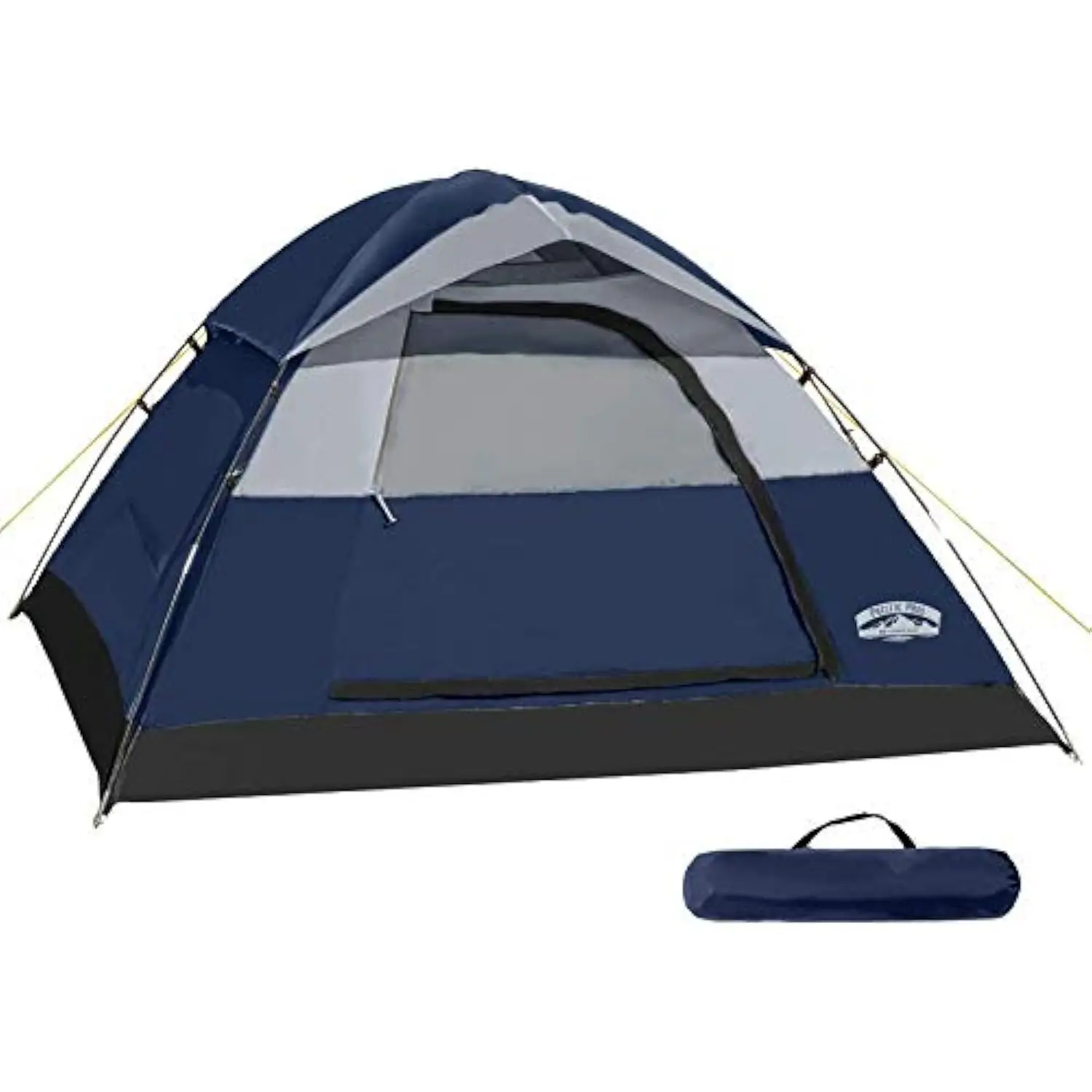
Expert Tips for Extending Your Tent’s Lifespan
Even the most durable tents benefit from proper care practices that maximize their service life:
Strategic Site Selection – Choosing appropriate tent sites dramatically impacts long-term durability. Avoid areas with abrasive surfaces like sharp rocks and roots that can damage floor materials. Position your tent to minimize wind exposure when possible, and clear debris that might puncture or abrade fabrics.
Proper Setup Technique – Maintain even tension across all attachment points during setup. Uneven tension concentrates stress on specific sections, accelerating fabric and seam fatigue. Ensure poles fully seat into grommets and connection points to prevent improper loading.
UV Protection Strategy – Whenever possible, set up in shaded locations to minimize direct UV exposure. For extended stays, consider using a secondary tarp or sunfly above your main tent to absorb UV damage rather than exposing your primary shelter.
Field Maintenance Protocol – Address small repairs immediately before they expand into larger issues. Carry appropriate field repair materials including tenacious tape, spare guy lines, and pole repair sleeves. Clean dirt and debris from zippers daily using a small brush to prevent premature wear.
Comprehensive Cleaning and Storage – Never store a tent when damp or dirty, as this quickly leads to mildew growth and fabric degradation. Hand wash with non-detergent cleaners when necessary, and ensure complete drying before storage. Store loosely in a cool, dry place rather than compressed in a stuff sack to preserve fabric coatings and reduce creasing.
Understanding mastering tent insulation for year-round camping principles also helps maintain your tent’s performance characteristics across varying conditions, extending its functional lifespan through proper deployment techniques.
Frequently Asked Questions About Durable Tents
How long should a high-quality tent last?
With proper care and maintenance, premium expedition tents can remain serviceable for 8-12 years of regular use. More affordable recreational tents typically provide 3-5 years of reliable service. Canvas options can last decades when properly maintained.
Are expensive tents always more durable?
While price often correlates with durability, it’s not a perfect relationship. Some mid-range tents offer excellent durability by focusing on key features without adding premium accessories. Research specific construction details rather than relying solely on price as an indicator of durability.
Can lightweight tents be durable?
Modern materials have significantly narrowed the gap between lightweight and durable designs. While the strongest expedition tents still carry weight penalties, many lightweight options now offer impressive durability through strategic material placement and innovative structural designs.
What’s the most important durability feature to prioritize?
Floor construction typically represents the most critical durability element for most users, as this experiences the most abrasion and stress. After floor quality, pole structure and rainfly material represent the next most important durability factors.
How do tent warranties reflect durability?
Lifetime warranties against manufacturing defects often indicate manufacturer confidence in basic construction quality, but they rarely cover normal wear and tear. The best all-season tent performance durability and value comes from brands that stand behind their products with sensible warranty terms that include some coverage for material failures.
Final Thoughts: Investing in a Tent That Will Last
When considering a durable tent purchase, the initial cost should be viewed through the lens of long-term value rather than just acquisition price. A premium tent that delivers reliable performance for a decade represents a better investment than replacing less durable options multiple times during the same period.
The most important consideration remains matching your specific durability needs to your intended use. Casual weekend campers facing moderate conditions can often choose lighter, more affordable options without significant risk. Those venturing into challenging environments or depending on their shelter for extended periods should prioritize the durability features highlighted throughout this guide.
Brands like Hilleberg, MSR, and The North Face have earned their reputations through decades of consistent performance in the world’s harshest environments. Their premium tent offerings reflect deep engineering experience and material knowledge that directly translates to field reliability when you need it most.
Remember that even the most durable tent requires proper care to reach its maximum lifespan. The maintenance practices outlined earlier represent small investments of time that yield significant extensions in service life, protecting your substantial gear investment.
At Explore Elements, we believe that selecting the right shelter for your outdoor adventures forms the foundation of safe, comfortable experiences in nature. The perfect balance of durability, weight, and performance creates a shelter you can truly depend on, no matter where your adventures take you.

